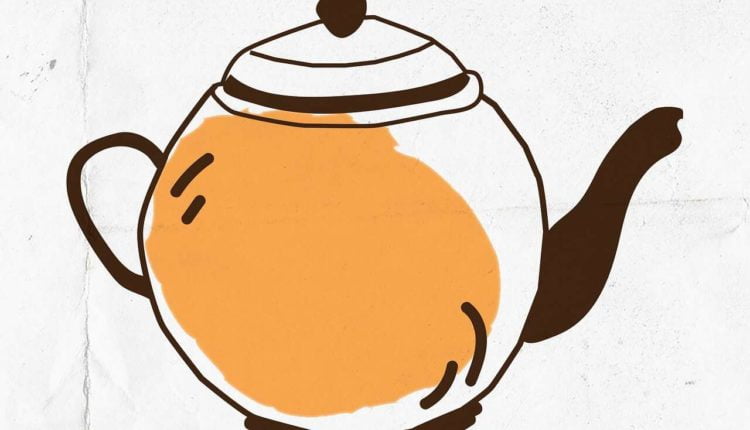Many varieties of commercial urns necessitate daily, weekly, or biweekly cleaning. Most people’s routines for daily cleaning don’t change much. The first rule of urn maintenance: Coffee urns are not meant to be used with chlorine bleach. The chlorine in this solution will corrode any stainless steel or silicone gaskets. Also, while cleaning coffee brewing urns, you should never use soap, scouring powders, or abrasives of any type, whether you’re doing a daily or biweekly clean.
Daily cleaning of automatic coffee urns after use entails the following procedures:
First, empty the urn and conduct a brewing cycle with boiling water. After spraying hot water into the liner, brush the entire pot with a long-handled brush.
Step 2: Empty the water and start over.
Third, wash and thoroughly rinse the wire brew baskets using urn cleaner. Used double or triple pots require the same care as single urns.
Once a week, automatic urns require a more thorough cleaning. Fill the pot with water and bring it to brewing temperature before scrubbing it. Several liters of water and 1.5–3 ounces of coffee urn cleaning agent should be added to the liner. The temperature should be raised, and a hot water brew cycle should be initiated. The liner has to sit in the solution for at least 30 minutes. Use a brush with a long handle to clean the lining and the cover. Take the liner and rinse it off with the cleaning solution. Repeatedly brew with the spray head positioned directly over the liner to clean it. After each brewing cycle, the rinse water must be drained.
The water supply and power must be disconnected from the urn before the gauge glass tube can be cleaned. Use a long, fine-bristled gauge glass brush to clean the coffee gauge glass. You may use the same brush to clean the coffee faucet’s pipe connection and the fitting at the bottom of the liner.
Urns from the Chinese hot tea series, the pour-over, midline, and barista series must be cleaned meticulously every night. Splash hot water into the stainless steel liner, then scrub it clean with a gentle brush. You can buy professional urn cleaners or mix one spoonful of bicarbonate soda into a gallon of water. This urn should not be cleaned with commercial cleaners. After turning off the power to the pots, each gauge glass should be scrubbed with a stiff bristle brush. It’s essential to disassemble faucets and clean them thoroughly after each use. If you use a Midland urn or a Barista series urn, you should run hot water through the brew cycle, brush the liner, drain the urn water, and repeat the operation daily. To avoid coffee oil burn-in, clean the liner covers and fill the liners with roughly a gallon of hot water.
Urns should be cleaned once every week or every other week. Chinese hot tea urns, midline heat exchange and pump urns, and the Barista Series all call for the same routine when used regularly. Any instances where this varies per urn will be specified there.
First, pour about a gallon of boiling water into each liner. Midline and compact urns should keep the temperature set to “Brew.”
The second step is to add the correct amount of urn cleanser (in the right concentration) to the liner. Using too much cleaning will corrode the coffee urn’s stainless steel construction. DIP-IT from Economics Laboratories, OXYLITE from Avril, Inc., Syndet Division, and TEMP-KLEEN from Caddy Corp. of America are all tried-and-true cleaners.
Step 3: Use a broad plastic brush to clean the liner’s interior, then rinse and drain the container. Step 3a is for midline or space-saving urns: Use a long, thin brush to clean the gauge glasses.
Step 4: Rinse the coffee faucets by unscrewing the huge plastic wing-nuts, which fasten the taps when the liners are empty, and the power is turned off. Use a large brush to scrub the urn from its opening to the interior.
Fifth, disassemble the faucet by unscrewing the top from the body. Silicone seat cups can be cleaned with a damp cloth and dish soap.
Step 6: Put the faucets back together. Rinse all the components thoroughly, fill the liners with hot water, and drain them.
The outer jacket of high-velocity brewing urns needs a unique cleaning procedure.
First, fill the outer jacket of the high-speed brewer with water.
Use only urn cleaning agents such as those described above in Step 2, then fill the urn liner with hot water until it is three-quarters full and turn on the heat.
Third, stir everything together and set it aside for half an hour.
Step 4: Use the long-handled brush to clean the gauge glass, faucet pipe, plugs, etc. The “lug nut” at the liner’s bottom must be cleaned.
Step 5: Scrub the urn well each time you rinse it with hot water (three to four times total).
Sixth, thoroughly wash each component.
Step 7: Depart with at least a gallon of water still in the urn. It’s important to remember that more giant jars will require more water. Keep the cover ajar until you need it again. Wait for the pot to cool down if you use cold water to avoid shattering the liner.
Eighth, scrub urn baskets with a harsh brush after dipping them in a cleaning solution.
Rinse well and set aside to dry for Step 9. If any holes in a Sprayhead are blocked, you should use a brush to open them up.
Manufacturers of commercial urns had varying recommended cleaning processes. For more information, consult the manufacturer.
CoffeeMakersShop.com is your one-stop shop for all your coffee machine needs, whether you’re in the market for a commercial model, a commercial-grade machine, or a coffee maker for your home. CoffeeMakersShop.com stocks a wide variety of coffee makers, grinders, and dispensers from Grindmaster-Cecilware and their respective parts and pieces. Visit our site at:
Read also: Uplift Efficiency With Cloud-Based Lending Software.


